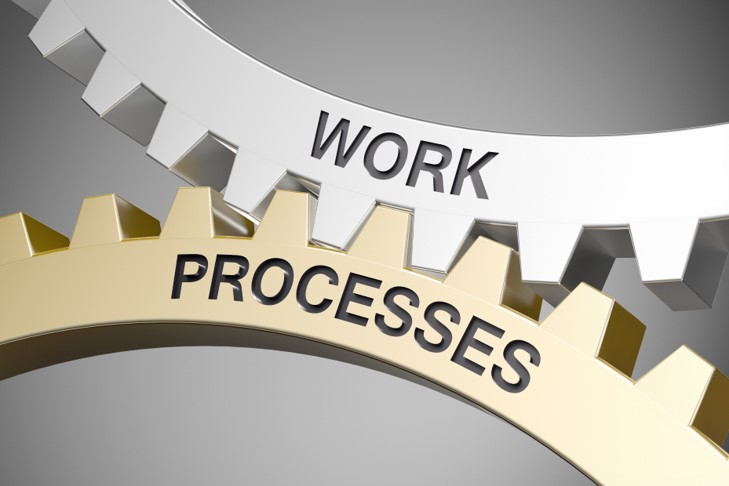The ancient Greek philosopher Heraclitus quoted “The Only Thing That Is Constant Is Change”, and over my 37-year professional career there has never been a truer statement. Take a look at the changes in technology that have changed the way we work and interact with others. I was speaking with a young colleague of mine the other day, and explaining to him when I was a VAX system administrator in the early 90’s working on 2nd shift and having 4 different pagers on my belt, which made me feel like I was wearing Batman’s utility belt, that this was a normal thing. We had a good laugh, because it seemed ridiculous compared to how computer systems are managed today, but this was only a little more than 20 years ago. My, have things changed over that short period of time! Change is inevitable, and in this very competitive business market, change has to be considered in how we do business.
A recent presentation from an executive from the largest retail store chain in the world, was titled “Innovate or Die”, which focused on the attitude and culture within the company on how to maintain its dominance in the market. The company has to continuously look at their business work processes, and put measures in place to determine how they are performing in the market. They do this by committing to a culture of innovation, and taking calculated risks. Sometimes they make mistakes, but most of the time they have successes. You can’t continue to remain competitive by continuing to do the same thing over and over, and not expect that some other company is going to find a way to do the same thing with better results.
So why is changing a business work process so difficult in some organizations? It is not impossible, but having experienced this first hand, it was an excruciating experience. Even today when I talk about streamlining a work process utilizing new technology to a company, and demonstrating how it can improve efficiency, lower cost, and improve quality; the common response is “I would love to, but you know how hard it is to introduce a different way of doing things within the company”. Companies have become so risk adverse that even when a better idea comes up they do not want to implement it on a project, because they fear failure, or have the attitude, “If it isn’t broken don’t fix it.” Unfortunately, this mindset then gets passed on to the next generation workforce. There are many reasons that can be attributed to this mindset, but ultimately the root cause for not changing a business work process is fear. Fear is a destroyer of innovation and ingenuity, and it keeps individuals from improving and learning. Businesses that were once successful, and then disappear have done so due to a failure to innovate.
So how can an organization become more open to change, and receptive to better work processes? Here are a few examples:
- Education
People who continue to be well educated, informed, and are knowledgeable will make better informed decisions on best practices, techniques, and technology that can be implemented or adopted that will improve efficiency, reduce cost risk, and improve quality to a business. Businesses that do not invest in education of its workforce will risk the business’s future, as well as its ability to be competitive in the market place - Develop a Plan with Expectations
Do not change an existing work process for the sake of changing. Developing a successful plan requires the understanding of knowing what to expect. Too often work processes are developed without defining the expectations, or putting in place processes to measure whether a work process is meeting the expectations of the plan. Planning with expectations requires knowledge of what you are trying to accomplish, and defining what those expectations are to determine if the work process will be an improvement. As the great football coach, Marv Levy, said “Plan the Work, and Work the Plan” - Measure, Document and Repeat
If a work process is to be put in place, commit to it, and make sure that you put in place measurements to determine if the work process is meeting the expectations. Documenting the results, whether good or bad are a necessity to ensure successes can be repeated, and mistakes can be corrected. Repetition will determine if a work process is sustainable to ensure consistency on project execution. - Find a Champion
A work process needs a champion to take ownership, and the champion will need sponsorship from executive management to put the commitment of the organization behind the champion. The champion of the work process is an individual that demonstrates leadership, commitment and enthusiasm in everything they do. They are responsible, hardworking, and a subject matter expert who can plan, execute, and resolve issues as they present themselves. Champions are developed and become invaluable to organizations that have them.
As stated earlier, change is inevitable, whether we choose to accept it or ignore it, change will happen. Success requires action, failure requires nothing at all. So how is your business doing? Are you improving or maintaining?
This blog post is by Matthew Craig. Matthew Craig is the Business Development Consultant at Assemble Systems. Matt has over 35 years of experience in the Engineering, Procurement and Construction (EPC) sector within the oil and gas and chemical industries. Matt’s primary focus for the past 20 years has been in dimensional technologies (i.e. survey, laser scan, photogrammetry, etc…) that capture as-built conditions of existing facilities.
If you enjoyed this post, please help it spread by emailing it to a friend, or sharing it on Twitter or LinkedIn.



Comments are closed.